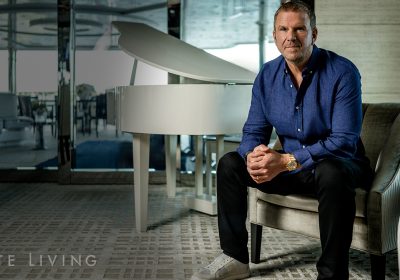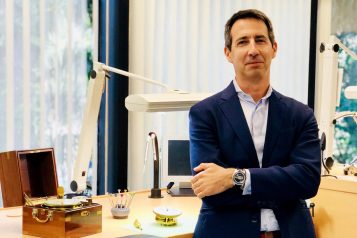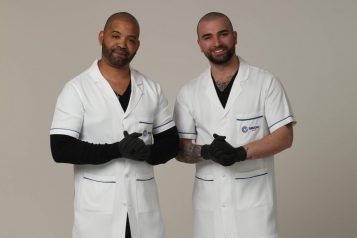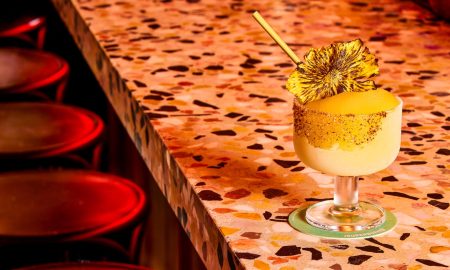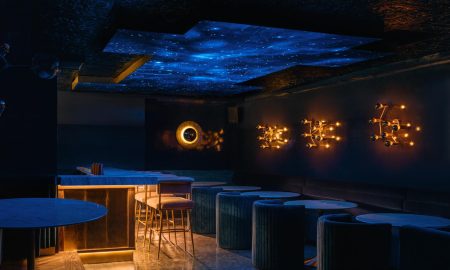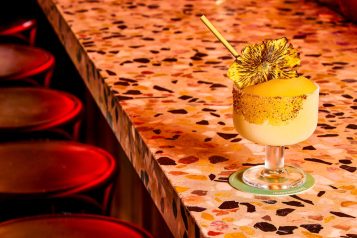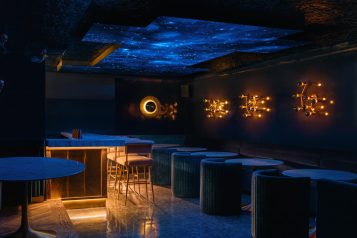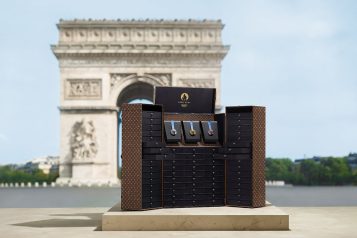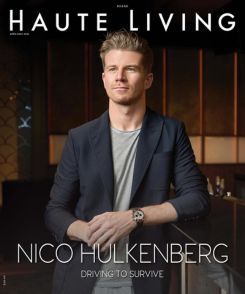 Photo Credit: Coravin
Photo Credit: Coravin
Greg Lambrecht has two passions in his life: wine and medicine. In his late twenties, the medical technology engineer decided he was frustrated with the way people had to consume wine—its limitations, strictly based on the volume of sale and the volume of bottles. This restricted his journey with wine.
In 1999, he decided to change this when he developed the first prototype of Coravin—what we now know and love as one of the most revolutionary pieces of wine preservation technology in the industry.
“My journey with wine began with a trip to Napa Valley. I first went into a winery and fell in love with it. I was stunned by the complexity of the wines I was drinking—filled with different herbs and notes of tobacco—it was just fantastic. I grilled the guy about how he made it and what the steps were,” Lambrecht shares. “My love for it expanded through college—I went to school on the East Coast and studied physics and I got my masters in bioengineering—all the while studying different regions of wine that I was exploring.”
While Lambrecht’s journey began with a love for American wines, when he met his wife, his palette expanded to appreciate European wines. Still, the two felt limited by what they were drinking and solely saved opening a bottle for the weekend, based on what made the most sense to open.
“As soon as you pull the cork, the clock is ticking because the wine starts to oxidize. You have a period of time where the wine is perfect and great, and then a day or two later it’s fallen off. We based our exploration of wine on the basis of volume sold to us—whether it was 750ml or a magnum—and we would schedule our consumption based on when we would have time and want to drink the whole bottle,” Lambrecht recalls.
“When I was in my ‘20s working in medicine creating medical devices, surgeons would gift me bottles of wine to celebrate a new product launch or a first-in-human trial for a device we created. They would always say, ‘This is one of the best wines from our region but it’s not ready yet. It’s too good to drink.’”
As time when on, Lambrecht realized his ‘too good to drink’ collection was amassing and he never found the occasion to actually crack a bottle open and indulge himself with a glass. This is when his frustration set in, and, being a medical device creator, he started studying the intricacies of surgical devices in comparison to corks and wine oxidization and how a needle may be able to penetrate while preserving the wine.
 Photo Credit: Coravin
Photo Credit: Coravin
“In medicine, we go in and out of bottles all the time with needles and I had gotten really good at making needles that could go in and out of things without causing damage to them. I remember sitting in my kitchen and holding a needle in one hand and a bottle in the other thinking there just had to be a way,” he recalls. “This was in ’99. My wife was pregnant with our second child and she stopped drinking completely so it was a really big incentive for me to come up with a different way to drink wine.
I developed the first prototype in ’99. I made one that allowed me to experiment with the different factors that could impact the way a wine evolved. I wanted to make sure I could pour a glass of wine from a bottle and drink it again in five years and not have it be any different than that first glass. In 2003, I came up with a system that allowed me to experiment with needles and different gases and pressures. It took me eight years to test with different wines and vintages. Eight years later, I had something that worked. I started the company in 2011, and we launched in 2013.”
In came the Coravin Model 1000—Lambrecht and Coravin’s first entry into the complex and highly-competitive wine & spirits industry. Like everything Lambrecht does, he plans methodically to ensure that product launches go to plan.
“I was a little nervous breaking into a new industry, but what I do with medicine is to introduce technology very carefully and slowly. You have to be careful with technology that changes behavior—i.e. Uber and taxis—you have a choice whether or not you clash with that industry or try to connect with it in a positive way.
I was very conscious of the wine industry—especially because our product is used on somebody else’s product. Before we launched, I let my friends try it out, then dropped it at places in the industry—wineries, Michelin-starred restaurants, liquor stores—to see how people would take to the product. Some were jumping-with-joy elated, while others were a bit skeptical at first. Overall, after using the product and understanding the possibilities it opened up for the wine industry—with restaurants now being able to put expensive bottles on the ‘by the glass list’ that weren’t selling by the bottle, and consumers at home indulging in wine much easier and more freely, the response was overwhelmingly positive. Wine freedom was uninhibited with the help of Coravin.”
Lambrecht set out with two missions in mind and from the first introduction of his initial prototype until now,—these have remained at forefront of his mind. His first is, “to expand the way wine is served, sold and enjoyed.” The second involves his impetus for the evolution of the Coravin brand.
“When we founded the company, I wrote something down. It was: Faster, easier, more fun than opening a bottle, independent of closure (meaning screw cap or cork), still or sparkling. I want people to drink whatever they want, whenever they want, by the glass, no compromise.”
While Lambrecht and the Coravin team haven’t solved for sparkling wine yet, they have successfully evolved the company with this in mind, as each release of a Coravin model becomes easier to use and they have added accessories along the way to expand the range of wines their systems can be used on.
“We work really hard and we’re constantly innovating. We started with a Model 1000 launch—it was a tank, made out of a lot of metal and it was heavy—however, it still worked to accomplish our goals perfectly well. Then, we came out with Models 1 and 2, which were easier to use. Then, we progressed with Models 3, 5, 6 and 11. Model 11 was created with the goal of zero-training required, one hand, across the table, at a distance. It’s also our digital version—you can set the pour speed on your phone choosing taste vs. glass, you can track how much gas is left, how many punctures. The SmartClamp technology [introduced on Model 11] was key to our newer models. We brought that technology across the entire line in Models 3, 5 and 6.
Model 3 is the entry-level option at $199, with Models 5 and 6 available in different colors, better finishes, they’re more attractive and offer a lot of options for the consumer. Our Model 11 has been primarily used by the trade industry, but it’s great at home as well.”
 Photo Credit: Coravin
Photo Credit: Coravin
Just as he does with his medical technology, Lambrecht used his different users as informal focus groups, as well as taking in feedback from customers to constantly see what the team could do better moving forward. “There were requests along the way, like being able to aerate your wine, so we made the Coravin aerator and the screw cap adapter, which can be used with all Coravin models.”
The only two areas of Lambrecht’s founding motto that he has left to accomplish is “still or sparking.” While Coravin is certainly “Faster, easier, more fun than opening a bottle, independent of closure,” he still needs to develop a product to use on champagne.
“If we can do that, just imagine what opportunities await you!” he exclaims. “Just imagine being able to come home and have a glass of champagne, and then a glass of white or red wine. You could do that every day! The perfect glass of sparkling, and the perfect glass of still—that’s my dream, and we’re determined the make it happen.”
It’s evident that not only did this change the way restaurants, sommeliers and vintners were creating and selling wine, but it also vastly affected the way consumers bought and drank wine at home. The at-home users particularly increased over the past six months, due to the lockdown and quarantine from the COVID-19 pandemic.
“Two things happened over the past six months—one, it obliterated our restaurant and wine business, as well as our retailers that had to close down stores. This was extremely sad for all of the business owners involved during this terrible time. The second was that our sales moved online and have exceeded our expectations. Because people could not go out, they realized Coravin allowed them to create their own wine-by-the-glass program at home. This has really taken off.”
When asked how he utilizes the technology and which bottles he enjoys the most now that he has Coravin, he relishes most in the freedom that Coravin provides him. “Wine is ultimately about experiences. One of the special things about it is that smell and taste are so incredibly linked to memory. A glass of great wine with friends or a great meal is something you remember. The experiences that I have had as a result of Coravin—aside from my children—are the best in my life—traveling around the world, meeting winemakers, drinking in their wineries or great restaurants around the world or even in people’s homes. Being the Coravin inventor is a really good thing if you like wine—it is the coolest job!” Lambrecht says with pure joy.
“Wine is such a beautiful, wonderful, social beverage that has been with us for 8,000 years. And you can see it being an incredible part of our culture, particularly in this lockdown-era. People enjoy wine together at home, even if it’s virtual. Wine is such a big part of life.”
At the end of the day, Lambrecht is living the dream—enjoying his own passions while helping people discover theirs—one glass at a time.
Find out more about Coravin and its latest offerings on its site https://www.coravin.com/.






